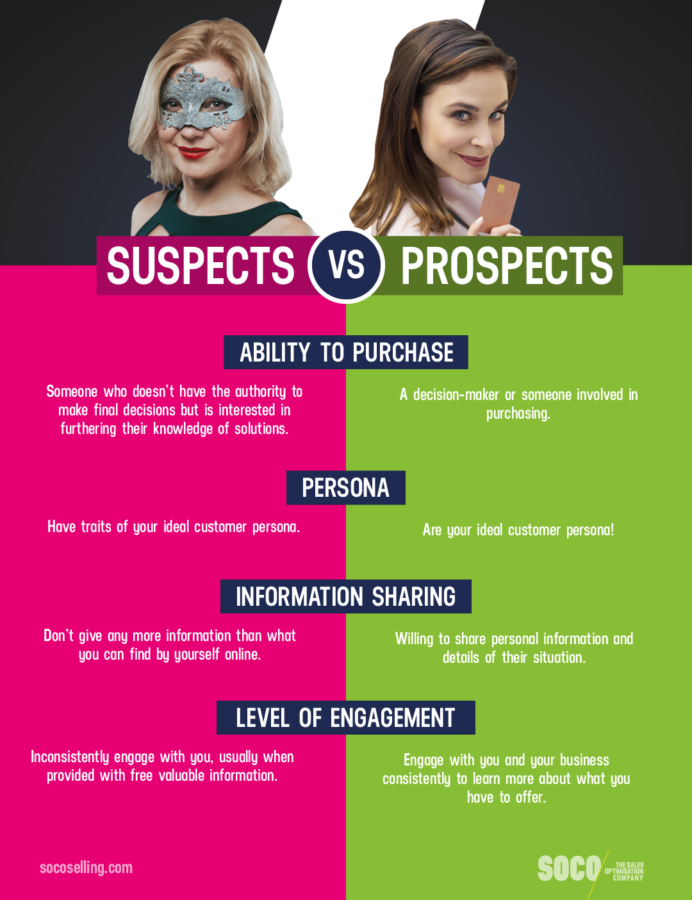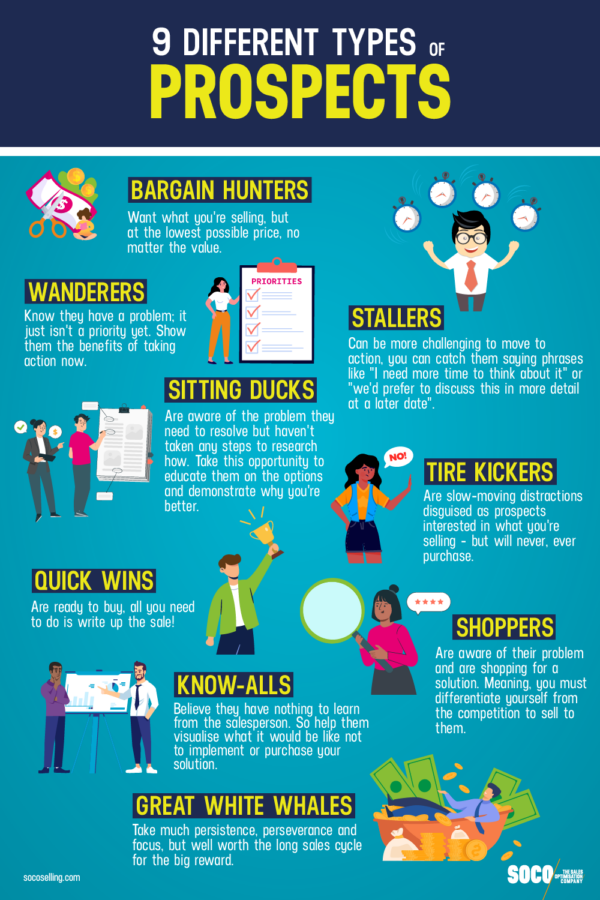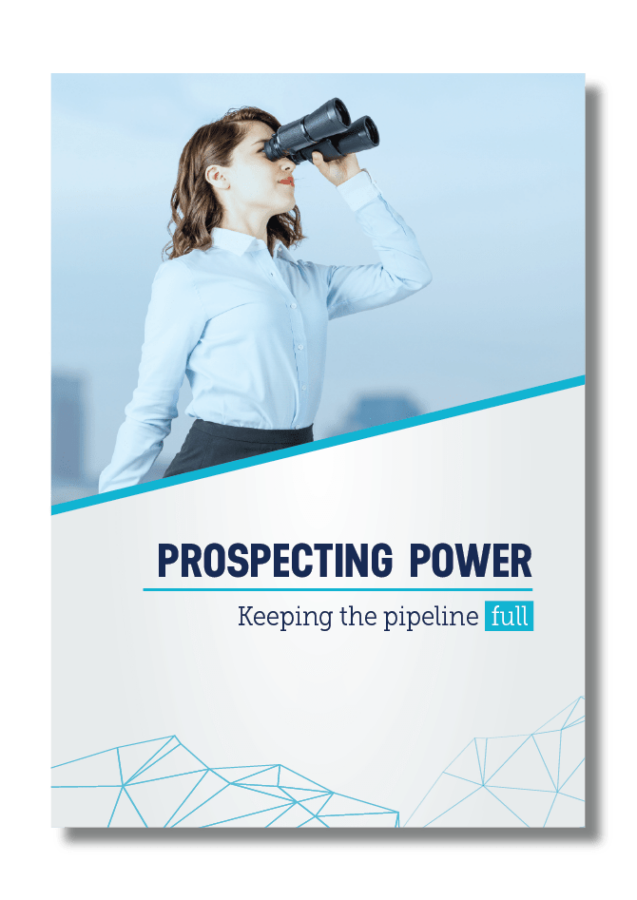
For sales professionals, grasping the intricacies of potential buyers’ personalities and traits is paramount for achieving success. The vast array of individual qualities and characteristics generates a diverse pool of individuals to engage within the market. By familiarizing yourself with these various personality types, you can refine your sales approach, tailor your pitches, and effectively appeal to your prospects. This article delves into the significance of understanding and selling to different personality types. We provide a comprehensive list of common personality types and offer practical steps to successfully engage each one in the sales process:
- What are Customer Sales Personalities?
- Why Is Selling To Different Personality Types Important?
- 9 Different Types of Customers: Before Purchase
- Why Is It Important To Know The Different Types Of Prospects?
- 9 Different Types of Prospects
- What Are The Types Of Customers?
- What Every Type of Customer Needs to Make a Purchase
- Discover a New Way to Generate Leads
What are Customer Sales Personalities?
Customer sales personalities (or buying or purchasing personalities) refer to the different behavioral and decision-making styles customers exhibit during the sales process. These sales personalities often fall into these six categories:
- The Analytical Customer
- The Assertive Customer
- The Relationship-Oriented Customer
- The Price-Conscious Customer
- The Impulsive Customer
- The Risk-Averse Customer
These purchasing personalities often influence how customers interact with us as salespeople, make purchasing decisions, and respond to various sales approaches.
By understanding these customer sales personalities, salespeople tailor their strategies and adapt their communication styles accordingly.
Why Is Selling To Different Personality Types Important?
While a helpful guideline, it’s important to note that these customer sales personalities are not fixed categories. Individuals may exhibit traits from multiple personalities depending on the situation, their needs, and your specific product or service.
Adapting your sales approach to match the customer’s personality and preferences is the best method for success, which can increase the likelihood of a successful sale.
Here are some other key reasons it’s essential to sell to different personality types:
- Boosting Sales Performance: Understanding distinct personality types enables you to cater to your target audience’s unique needs and traits. Leading to improved sales figures and a higher success rate in closing deals.
- Enhancing Negotiation Skills: Familiarity with various human characteristics enhances your ability to negotiate effectively with buyers. By assessing their buying habits and adapting your approach, you can find a suitable compromise for successful transactions.
- Increases Time Efficiency: Prior knowledge of your target audience saves valuable time and resources. Being prepared for a diverse range of personalities allows for efficient sales interactions, minimizing the wastage of time and expenses.
- Improved Decision-Making: Understanding unique personalities enhances your decision-making skills during sales pitches. By adapting your style to align with the individual’s characteristics, you can make more informed decisions on how to engage best and address their needs.
- Strengthened Critical Thinking: Selling to different personality types sharpens your critical-thinking skills. It allows you to make logical conclusions and informed decisions based on the realistic information and insights you gather about each buyer.
- Customized Sales Pitches: Tailoring your sales pitch to each personality type significantly increases your chances of closing the sale. You deliver a more personalized and compelling message by individualizing your approach based on the immediate prospect, buyer, or audience.
9 Different Types of Customers: Before Purchase
If you’ve ever launched into a sales pitch or presentation for someone you thought was a prospect but turned out not to be. Even if you were to deliver a killer presentation with compelling stories, which is a solid move, it’s like casting a spell that won’t work because the audience is wrong. You know how frustrating it is to waste precious prospecting time! Especially when you’d rather be doing something else.
So tighten up your processes and maximize sales results by familiarising yourself with prospects’ traits, qualities, and personalities. Read on to discover 9 different types of prospects and how to sell to them in this article.
Prospects Vs Leads: What’s the difference?
A prospect is an individual or business entity showing some interest or potential in your product or service. They may have engaged with your marketing materials, visited your website, or expressed curiosity.
Conversely, a lead is a prospect who has provided their contact information, such as name, email address, or phone number. This contact information lets you directly contact them and initiate communication with them.
While all leads are prospects, not all prospects have become leads by sharing their contact details.
Also read: Swipe Our 6-Step Revenue-Winning Lead Nurturing Strategy (+Templates)
What’s an “Opportunity”?
A sales opportunity is a qualified prospect with a high probability of becoming a customer. Not only are they a good fit for what you’re selling, but they actively have a pain point that your product or service can solve. As such, they’re genuinely interested in your solution.
What About Suspects Vs. Prospects?
Suspects are motivated by your knowledge rather than what you’re selling. That’s why sales calls and sales presentations don’t work on suspects; you’ll often find them stale in your sales funnel.

In contrast, prospects have already given you their personal information, such as an email address, in exchange for more content.
Why Is It Important To Know The Different Types Of Prospects?
Most importantly, you want to ensure you’re talking to a qualified prospect and know there’s a good chance of making the sale.
However, there are several other reasons why it’s important to know, identify, and familiarise yourself with different types of sales prospects:
- Create custom approaches: Get a better chance to appeal directly to prospects’ interests.
- Better negotiation position: by learning each type of prospect’s motivations and fine-tuning the relevant negotiation skills.
- Better decision-making: By using prospect research, we can make informed decisions on when to approach them and how to deliver the sales pitch.
- Diversify your customer base: Make more options for yourself – which usually means a higher chance of a successful sale – although particular prospects are hard to persuade.
- Improve sales: Being relatable to many more different types of prospects to grow a wider audience with better sales opportunities.
9 Different Types of Prospects
Discover 9 types of prospects to maximize your sales results and strengthen your prospecting process:

1. Bargain Hunters
Bargain hunters want what you’re selling but want it at the lowest possible price, no matter the value. No matter what price, quote, freebies, or discounts you offer, they’ll still negotiate with you to lower the cost overall. The best way to sell to this prospect is to propose a lower price option to them that still allows you to benefit.
Also read: 10 Sales Needs Analysis Questions You Should Always Ask Prospects
2. Quick Wins
Otherwise known as “low-hanging fruit”, these types of prospects are perfect for new salespeople who are still learning the industry and building momentum. While a helpful strategy for those looking to develop valuable experience and further their professional network.
These types of buyers are a combination of friends, family, and casual professional networking relationships. As a result, salespeople usually spend the same time on smaller deals. A problem when they could be using it for more significant opportunities.
3. Tire Kickers
Tire kickers aren’t ideal prospects by any means. They’re usually annoying, slow-moving distractions disguised as prospects interested in what you’re selling – but will never, ever purchase.
The best way to avoid this type of anti-prospect is to ask yourself if they’re a decision-maker and whether they match your ideal client profile. If that doesn’t work, you can ask them what they think their issue is because you can waste too much time on this type of prospect.
So it’s important to feel out the conversation and determine whether they’re protecting information – if so, it’s time to move on.
Also read: Separating Suspects And Prospects: Improve The Leads In Your Funnel
4. Stallers
Stallers aren’t a bad type of prospect can be more challenging to move to action. It’s a big problem, considering that prospects are less likely to buy from you the longer it’s been since your sales pitch, and no one wants to keep following up with someone who is vague.
This type of prospect will use deflection strategies and phrases like “I need more time to think about it” or “We’d prefer to discuss this in more detail later.” That’s why interactions with this prospect need to be quick, confident, and immediately target their concerns to avoid the chance of them stalling.
Also read: Questioning Cheat Sheet: 10 Questions To Move A Sale Forward
5. Sitting Ducks
Another ideal, quick win, sitting ducks are prospects who know they have a problem they need to resolve but haven’t taken any steps to research how to do so. As a result, you can be sure they’re not comparing you to any competitors, making you the most viable and accessible choice.
However, to successfully sell to sitting ducks, they must be confident in your solution. That’s why a segmented approach works best for diagnosing and understanding their problem in its entirety before proposing a solution that fully addresses their concerns.
6. Shoppers
This type of serious prospect is aware of their problem and is searching for a solution. As a result, they often have many providers bidding for their business – which means you often have to contend against their leading competitors.
Success is usually achieved with this type of prospect by researching competitors and proving how your product performs better, is different, or has more value.
7. Wanderers
The wanderer prospect knows they have a problem; it isn’t a priority to resolve it yet. Often, they’re too busy to be concerned with fixing the issue, so you have to appeal to them by waiting to agree on their terms. For example, be highly flexible and move around appointments if it means they choose that date.
9. Know-Alls
While they present as well-informed about the problem and the currently available solutions, the know-all prospect also believes they have nothing to learn from the salesperson. To sell to the stubborn know-all prospect who brushes off suggestions.
First, try to determine how accurate their knowledge is. Then, help them visualize what it would be like not to implement or buy your solution.
9. Great White Whales
Landing this type of prospect takes much persistence, perseverance, and focus, but it is well worth the long sales cycle for the big reward. While intimidating for most, salespeople should set their sights on this type of prospect. Mainly, they never know when life, organizational, environmental, or personal factors will affect their needs and appeal to your solution.
What Are The Types Of Customers?
The types of customers can vary, but common categories include:
The Analytical Customer
Analytical customers prefer data-driven information and detailed explanations. They take their time to evaluate options, compare features, and make decisions based on rational analysis. Salespeople dealing with analytical customers should focus on providing in-depth product information, technical specifications, and objective data to support their claims.
How to Sell to The Analytical Customer
- Provide detailed information and data to support your claims.
- Focus on the technical specifications and features of your product.
- Be prepared to answer their questions with evidence and logic.
The Assertive Customer
Assertive customers are confident and decisive. They value efficiency and may exhibit a more direct and results-oriented approach. Salespeople dealing with assertive customers should be concise, provide quick responses, and highlight their products or services’ key benefits and outcomes.
How to Sell to The Assertive Customer
- Be confident and concise in your communication.
- Highlight the key benefits and results your product or service offers.
- Offer efficient and time-saving solutions.
The Relationship-Oriented Customer
Relationship-oriented customers prioritize building rapport and trust with salespeople. They appreciate personalized attention, open communication, and long-term partnerships. Salespeople should invest time in relationship-building activities, listen actively, and provide ongoing support to meet the needs of these customers.
How to Sell to The Relationship-Oriented Customer
- Invest time in building rapport and trust.
- Listen actively to their needs and concerns.
- Provide personalized attention and ongoing support.
The Price-Conscious Customer
Price-conscious customers prioritize finding the best deal and maybe more skeptical about added value. Salespeople should emphasize cost savings and return on investment and highlight any unique features or benefits that justify the price.
How to Sell to The Price-Conscious Customer
- Emphasize the cost savings and value for money your product offers.
- Highlight any discounts, promotions, or competitive pricing.
- Demonstrate the long-term benefits and ROI of your product.
The Impulsive Customer
Impulsive customers tend to make decisions quickly based on emotional appeal. Salespeople can appeal to their emotions by focusing on the positive experiences, benefits, and instant gratification their products or services provide.
How to Sell to The Impulsive Customer
- Appeal to their emotions by focusing on the positive experiences and benefits.
- Highlight the immediate gratification and convenience your product provides.
- Create a sense of urgency through limited-time offers or exclusive deals.
The Risk-Averse Customer
Risk-averse customers are cautious and seek reassurance before making decisions. Salespeople should address potential concerns, and provide guarantees, testimonials, and references to instill confidence and mitigate perceived risks.
How to Sell to The Risk-Averse Customer
- Address their concerns and provide reassurance.
- Offer guarantees, warranties, or return policies.
- Provide testimonials, case studies, or references to build credibility.
What Every Type of Customer Needs to Make a Purchase
Regardless of their type, every customer needs a few key elements to make a purchasing decision:
- Information: Customers require relevant and accurate information about the product or service, including its features, benefits, and pricing details.
- Personalization: Customers don’t want to feel like a number; they want a personalized experience where they don’t have to repeat themselves
- Trust: Building trust is crucial. Customers need confidence in the product’s quality, reliability, and the brand or company’s reputation.
- Value: Customers seek value for their investment. They need to see how the product or service addresses their specific needs and provides a beneficial solution compared to alternatives.
- Assurance: Customers want reassurance that they are making the right decision. This can come from guarantees, warranties, return policies, or positive reviews and testimonials.
- Convenience: Ease of purchase is essential; customers want to converse and receive support over the channel of their choice. Customers appreciate a smooth buying process, simple payment options, and efficient customer service.
- Support: All customers want fast answers to issues and the ability to get help as soon as needed. Post-purchase support, such as customer service, technical assistance, or product training, can significantly influence a customer’s buying decision.
Discover a New Way to Generate Leads
Like blood to a body, a full sales pipeline is necessary for your business to survive. The thing is, prospecting has evolved, and old methods just aren’t effective anymore.
Our Prospecting Power Training teaches participants how to ensure your customer acquisition strategy is creative, persistent, and, most importantly, generates real results.


